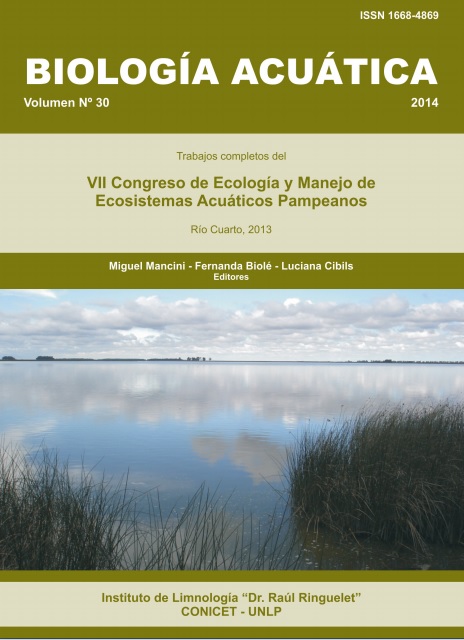Cambios en las características limnológicas del Embalse del Río Tercero por efecto de la invasión de Limnoperna fortunei (Bivalvia: Mytilidae)
Keywords:
limnology, invasive bivalves, ecological impact, reservoir, Limnoperna fortunei, ArgentinaAbstract
Since its introduction in South America around 1990, the freshwater Asian mussel Limnoperna fortunei has been shown to strongly interact with several components of the local biota, sometimes producing significant changes at the ecosystem-wide scale. The “golden mussel” is present prior to 2000 in Río Tercero reservoir, Córdoba, Argentina, most probably introduced overland by a fouled recreational or fishing boat from the Paraná River. Since 2003 massive growth on submerged solid structures (piles, moorings, boat hulls) was strongly noticeably. Data collected regularly since 1996 showed changes in several water-column properties after the invasion. From 2004 on, water transparency increased, and suspended matter, chlorophyll a, and primary production decreased significantly, with stronger changes occurring in the area with highest mussel densities. On the basis of diver collected bottom samples taken in a 2006 survey, it has been estimated that the 47 km2 reservoir hosts around 45 billion mussels, distributed mainly on solid surfaces, in waters less than 10m depth. At these densities, a volume equivalent to that of this water body can potentially be filtered by the bivalves every 2-3 days. The present survey addresses the question whether Limnoperna impact on the ecosystem is measurable.





















